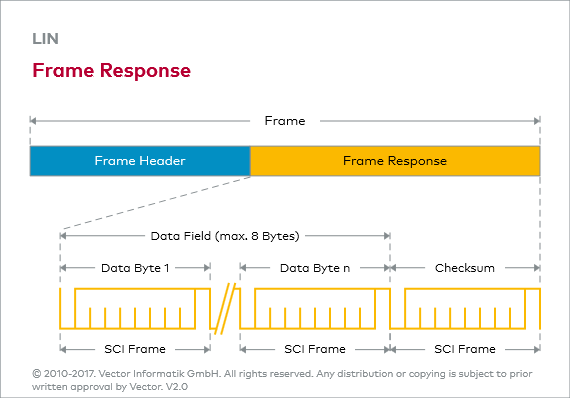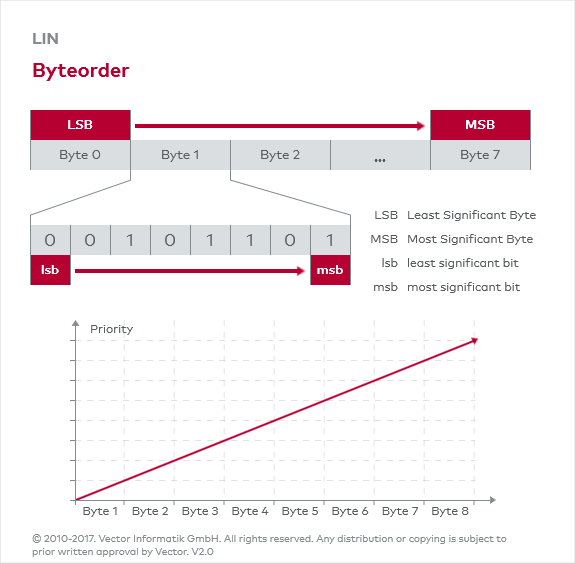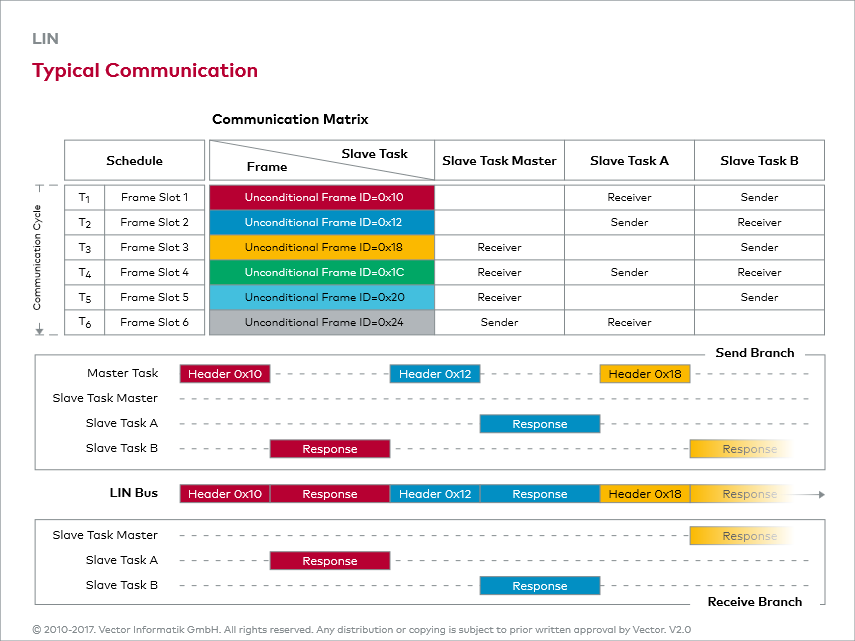Frame Response
Responsibility
Slaves use a frame response to answer a request by the master. The individual use the identifier in the header to determine whether a response needs to be generated. Typically a frame consists of the header from the master and the response from a slave (see figure: Frame Response).
Data Field
and Byte Order
A maximum of eight data bytes can be transmitted in a frame response. The transmission is made in ascending order from the least significant to the most significant byte. This also applies to the bits in the bytes. As a rule, a byte is transmitted from the least significant bit to the most significant bit. This means that the significance of the bits as well as that of the bytes ascends monotonically from the beginning to the end of a response (see figure: Byte Order).
Broadcast
A frame response is, in principle, available to be received by any node (broadcasting). Which node actually uses the data it contains is defined in the LDF (see figure: Typical Communication). The useful data is protected by a checksum.
Response Space (RS)
Between the master’s request (header) and the slave’s response there is a pause time. This is referred to as the response space (RS). During this time period, a node switches from the receiving state to the sending state.



